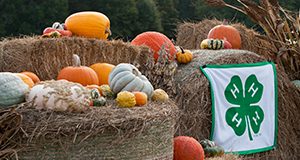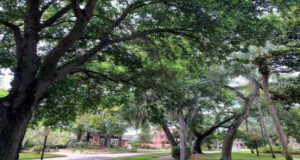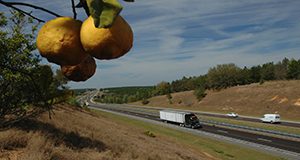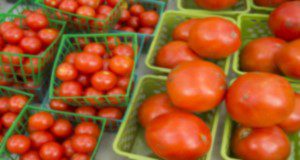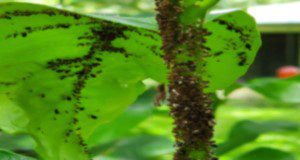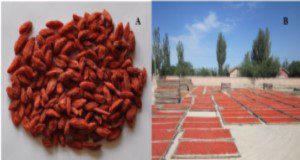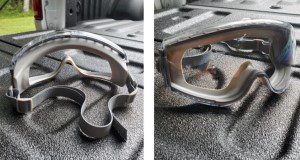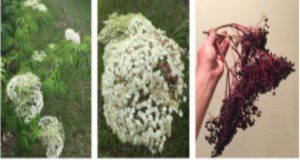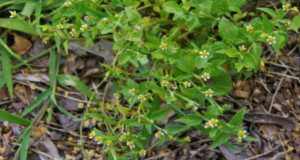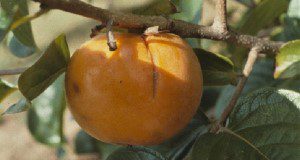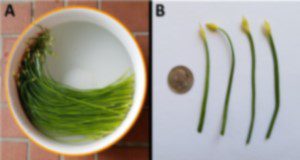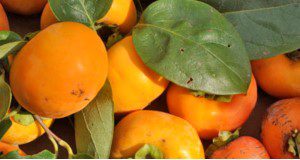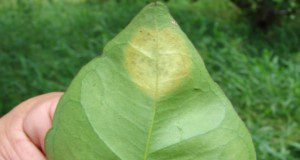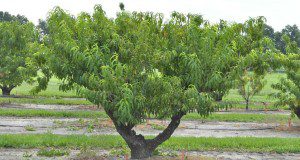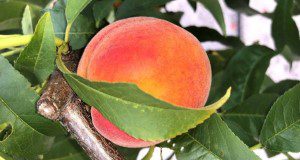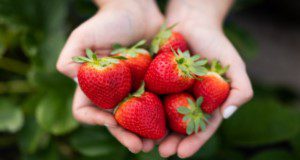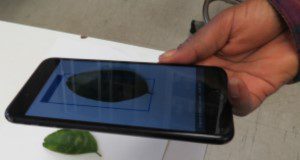Even though many recognize FFA and 4-H, there is still a big disconnect in understanding the similarities and differences between them. This 4-page document serves as an educational tool for school-based agricultural education and 4-H programs, and provides a background of the history, characteristics, and membership process of these long-standing organizations. Written by Debra Barry, Alyssa Shepherd, Jennifer Patton, and Stephen Gran, and published by the UF/IFAS Department of Agricultural Education and Communication, September 2020.
https://edis.ifas.ufl.edu/wc371
Category: Agriculture
Florida’s Urban Forest: A Valuation of Benefits
This new 13-page article combines canopy coverage data from all of Florida’s metropolitan and micropolitan areas with ecological models developed by the USDA Forest Service to calculate several key benefits of urban trees and an approximation of their monetary value. Benefits of urban trees include carbon sequestration/storage, air pollution filtration, and stormwater mitigation. Written by Drew C. McLean, Andrew K. Koeser, Deborah R. Hilbert, Shawn Landry, Amr Abd-Elrahman, Katie Britt, Mary Lusk, Michael G. Andreu, and Robert J. Northrop, and published by the UF/IFAS Environmental Horticulture Department.
https://edis.ifas.ufl.edu/ep595
The Electronic Logging Device Mandate and Costs for Refrigerated Citrus
Speedy truck transportation is required to get products like fresh produce from the farm to the grocery store before it spoils. The Electronic Logging Device (ELD) Mandate from the Federal Motor Carrier Safety Administration could significantly affect trucking costs for agricultural producers. This 6-page publication written by Tara Wade, Shellye Suttles, and Derek Farnsworth and published by the UF/IFAS Food and Resource Economics Departmentuses truck shipment data to analyze transportation costs and identifies potential future effects of the ELD Mandate.
https://edis.ifas.ufl.edu/fe1086
Cooperative Unit Systems: 1. Introduction and Raising Market Animals in a Group Setting
Traditionally, organizations such as 4-H have encouraged youth to participate in market animal projects as a way of increasing youth participation and introducing youth to production agriculture. As the demographics shift to a more urban clientele base for 4-H, there are new barriers of entry to market animal projects that were not seen in generations past. To address these barriers of entry, systems such as cooperative animal units have been set up. This 3-page document discusses components and limitations of cooperative animal units. Written by Alyssa Schortinghouse, and published by the UF/IFAS 4-H Youth Development Department, August 2020.
https://edis.ifas.ufl.edu/4h408
Tomato Production in Florida Using Fertigation Technology
Tomato is in high demand because of its taste and health benefits. In Florida, tomato is the number one vegetable crop in terms of both acreage and value. Because of its high value and wide acreage, it is important for tomato production to be efficient in its water and nutrient use, which may be improved through fertigation practices. Therefore, the objective of this new 7-page article is to disseminate research-based methods of tomato production utilizing fertigation to enhance yield and nutrient use efficiency. Written by Mary Dixon and Guodong Liu, and published by the UF/IFAS Horticultural Sciences Department.
https://edis.ifas.ufl.edu/hs1392
Are Homemade “Pesticides” Legal?
Interest around pesticides and possible alternatives to them have increased in recent years. As individuals seek out possible alternatives, some consider making their own solutions to pest control. Homemade pesticide recipes abound online and are commonly seen in various social media platforms. This new 3-page publication of the UF/IFAS Pesticide Information Office looks at the legality of these mixes, when and where they can be used, and what other considerations need to be taken into account when utilizing these mixes. Written by Brett Bultemeier and Jason Ferrell.
https://edis.ifas.ufl.edu/pi288
Goji Berry: a Novel Nutraceutical “Superfruit” for Florida Master Gardeners
Goji berries have been used in both fresh and processed forms for food and medicine for more than 4,000 years in China. The goji berry fruit is known as a “superfruit” thanks to its high levels of vitamins and minerals, as well as other medicinal benefits recognized in many countries around the world. Most of Florida’s climate is favorable for goji berry, and a few Florida growers have cultivated it for years. This species can tolerate infertile and unfavorable growth conditions, and the prominent health benefits of this crop may be highly profitable for Florida growers. The objective of this new 7-page article is to provide a general overview of how the goji berry can be grown in Florida. Written by Yujie Jiao and Guodong Liu, and published by the UF/IFAS Horticultural Sciences Department.
https://edis.ifas.ufl.edu/hs1391
Protective Eyewear for Pesticide Applicators
Protective eyewear is one of the most essential pieces of PPE an applicator can utilize when it is required. This new 3-page publication of the UF/IFAS Pesticide Information Office discusses the types of protective eyewear and how best to select and maintain these particular pieces of PPE. Written by Brett Bultemeier.
https://edis.ifas.ufl.edu/pi287
Elderberry and Elderflower (Sambucus spp.): A Cultivation Guide for Florida
The purpose of this new 9-page paper, written by David Jarnagin, Ali Sarkhosh, Juanita Popenoe, Steve Sargent, and Kevin Athearn, and published by the UF/IFAS Horticultural Sciences Department, is to provide information on growing American elderberry in Florida as an alternative crop for commercial growers as well as homeowners. Although elderberry has been historically grown at commercial scale in some world regions, especially throughout Europe, in the New World it has not found meaningful commercial acceptance until recently.
https://edis.ifas.ufl.edu/hs1390
Biology and Management of Galinsoga (Galinsoga quadriradiata) in Ornamental Crop Production
Galinsoga (Galinsoga quadriradiata) is an erect (upright), herbaceous, short-lived warm-season annual weed in Florida landscapes, container nurseries, and other agricultural production systems. In nurseries and landscapes, galinsoga can be a troublesome weed, but it has been utilized by some cultures for food or medicinal purposes. This new 5-page article is written for green-industry professionals and others to aid in the identification and management of galinsoga in and around ornamental plants. Written by Thomas Smith, Chris Marble, Shawn Steed, and Nathan Boyd, and published by the UF/IFAS Environmental Horticulture Department.
https://edis.ifas.ufl.edu/ep593
Japanese Persimmon Cultural Practices in Florida
Persimmons are considered a relatively sustainable crop in Florida, rated as a 6 out of 10 on an assessment of agricultural sustainability, with a moderate commercial potential and high direct-to-consumer potential. Trees grow and fruit best in central and northern Florida and can produce high yields of good-quality fruit. This new 13-page publication of the UF/IFAS Horticultural Sciences Department describes how to propagate and establish persimmons in Florida, while also providing information on irrigation, fertilization, harvest, pests, diseases, and more. Written by Ali Sarkhosh, Dustin M. Huff, and Peter C. Andersen.
https://edis.ifas.ufl.edu/hs1389
Lumpy Jaw in White-Tailed Deer
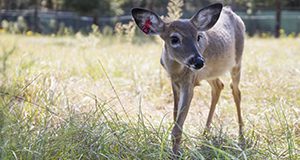
Lumpy jaw is a deer health problem that all deer farmers eventually face. It gets its name from the swollen jaws or cheeks and necrotic lesions it causes in and around the jaw bones of animals including white-tailed deer. The disease is considered a significant problem for deer farms in North America, where it is one of the most important production-limiting diseases and causes high rates of mortality in fawns. This 4-page fact sheet written by Juan M. Campos Krauer, Samantha M. Wisely, and Hannah M. Barber and published by the UF/IFAS Department of Wildlife Ecology and Conservation explains how deer acquire lumpy jaw, how to spot it in deer, how to treat it, and how to prevent it in the first place.
https://edis.ifas.ufl.edu/uw472
Leek Cultivation Guide for Florida
Leek (Allium porrum L.) is a member of Amaryllidaceae, a family with ornamental crops, like amaryllis, and with vegetable crops, like onion. Leek is a highly demanded vegetable because of its flavor and nutrient content. Although there is great potential for leek to be grown commercially in Florida due to demand and appropriate climatic conditions, the United States does not currently produce a significant quantity of leek compared to countries such as Indonesia, Turkey, and China. This new 7-page publication of the UF/IFAS Horticultural Sciences Department, written by Mary Dixon and Guodong Liu, provides a basic guide to cultivation of leek in Florida, as well as information on its agricultural, culinary, and medicinal uses.
https://edis.ifas.ufl.edu/hs1388
Cultivares de Caqui Japonés en Florida
El caqui japonés, Diospyros kaki L., es originario de China y fue cultivado por primera vez en Florida en el año 1870. El número de fincas productoras de caqui en Florida ha aumentado de 164 a 227 durante el período 2012-2017, haciendo mayor hincapié en la naturaleza de pequeña escala de la superficie promedio de fincas en esta industria. Los árboles crecen y fructifican mejor en el centro y norte de Florida, y pueden producir altos rendimientos de fruta de buena calidad. En el sur de Florida, la calidad de los frutos de tipo astringentes es mejor que la de los de tipo no astringentes.
This new 12-page article is the Spanish translation of SP101/MG242, Japanese Persimmon Cultivars in Florida. Written by Ali Sarkhosh, Peter C. Andersen, and Dustin Huff; translated by Jonathan Clavijo Herrera; and published by the UF/IFAS Horticultural Sciences Department.
https://edis.ifas.ufl.edu/mg460
Citrus Diseases Exotic to Florida: Citrus Leprosis
This article is one in a series designed to provide important information on the causal agent, symptoms, and transmission of exotic citrus diseases. Disseminating the information about the diseases to the citrus industry may prevent their introduction and spread in Florida. This 5-page document will focus on the exotic viral disease citrus leprosis. This is a major revision of an article originally published in 2006. Written by O. Batuman, A. Levy, P. Sieburth, A. M. Paolillo, K.-R. Chung, and R. H. Brlansky, and published by the UF/IFAS Plant Pathology Department.
https://edis.ifas.ufl.edu/pp148
Concepts, History, Principles, and Application of Germplasm Cryopreservation Technology
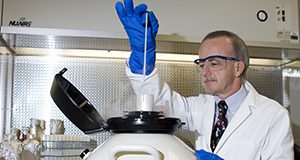
Germplasm refers to the living genetic resource of such biological materials as seeds, pollen, animal sperm, eggs, embryos, and larvae. Cryopreservation maintains these materials at extremely low temperatures. The technology is used in medicine as well as to maintain biological diversity, preserve genetic resources, support breeding programs, and conserve endangered species. This 10-page fact sheet written by Huiping Yang and Terrence R. Tiersch and published by the UF/IFAS School of Forest Resources and Conservation Program in Fisheries and Aquatic Sciences introduces the basic concepts, history, principles, and applications of germplasm cryopreservation technology.
https://edis.ifas.ufl.edu/fa223
Summer Pruning in Low-Chill Peaches Grown in Florida
Low-chill peach trees growing under Florida conditions can become vigorous and large. Summer pruning is a management strategy that can be applied to help restructure the canopy, direct the tree’s resources into fruit production, and improve the efficiency of fieldwork. Without summer pruning, peach orchards in subtropical regions will continue to grow vigorously and, if left unmanaged, will reach a point at which ladders will be required to harvest and maintain the trees. Summer pruning can be a means of reducing overall tree size, redistributing fruiting wood for easier harvesting, reducing disease pressure, and increasing fruit quality. This new 5-page publication of the UF/IFAS Horticultural Sciences Department, written by Ali Sarkhosh, Dustin Huff, Trequan McGee, and Juanita Popenoe, provides an illustrated step-by-step guide to summer pruning of peach trees.
https://edis.ifas.ufl.edu/hs1377
Oportunidades alternativas para fincas pequeñas: Producción de durazno y nectarinas versión revisada
El suave clima invernal de Florida y el comienzo de la temprano de primavera ofrecen oportunidades únicas para la producción de duraznos y nectarinas de temporada temprana. Durante los últimos 12 años, la Universidad de Florida ha lanzado muchos cultivares nuevos de durazno y nectarina. Estos nuevos y mejorados cultivares han aumentado el potencial de expansión del aspecto comercial de melocotones y nectarinas en gran parte de la península de Florida y en las regiones de la Costa del Golfo del sureste de los Estados Unidos.
This new 5-page article is the Spanish translation of RFAC018, Alternative Opportunities for Small Farms: Peach and Nectarine Production Review. Written by Ali Sarkhosh, Mercy Olmstead, Jeff Williamson, Jose Chaparro, and Juanita Popenoe, translated by Eva Pabon, and published by the UF/IFAS Horticultural Sciences Department.
https://edis.ifas.ufl.edu/hs1374
Pestalotia Leaf Spot and Fruit Rot of Strawberry
Pestalotiopsis-like fungi cause diseases on many different species of plants worldwide, including strawberry. The pathogen is not necessarily new to strawberry and was first reported causing fruit rot in Florida and Israel in the 1970s. However, during the 2018–19 and 2019–20 strawberry seasons, severe and unprecedented outbreaks were reported in Florida, characterized by symptoms on nearly all plant parts including roots, crowns, petioles, fruit, and leaves. This new 4-page publication of the UF/IFAS Plant Pathology Department describes the disease and its causal agent and briefly covers what is known about disease development and control practices. This document will provide valuable information to strawberry nursery and fruit production growers. Written by Juliana S. Baggio and Natalia A. Peres.
https://edis.ifas.ufl.edu/pp357
Computer Tools for Diagnosing Citrus Leaf Symptoms (Part 2): Smartphone Apps for Expert Diagnosis of Citrus Leaf Symptoms
Visual identification of nutrient deficiencies in foliage is an important diagnostic tool for fine-tuning nutrient management of citrus. This new 2-page article describes a new smartphone app that uses a trained neural network to identify disease and pest symptoms on citrus leaves through your phone’s camera. Written by Arnold Schumann, Laura Waldo, Perseveranca Mungofa, and Chris Oswalt, and published by the UF/IFAS Department of Soil and Water Sciences.
https://edis.ifas.ufl.edu/ss691
